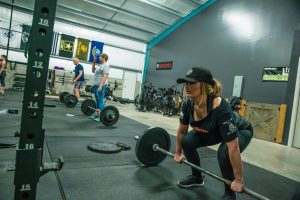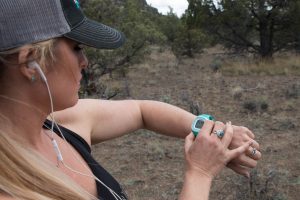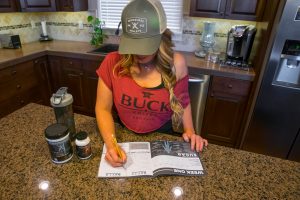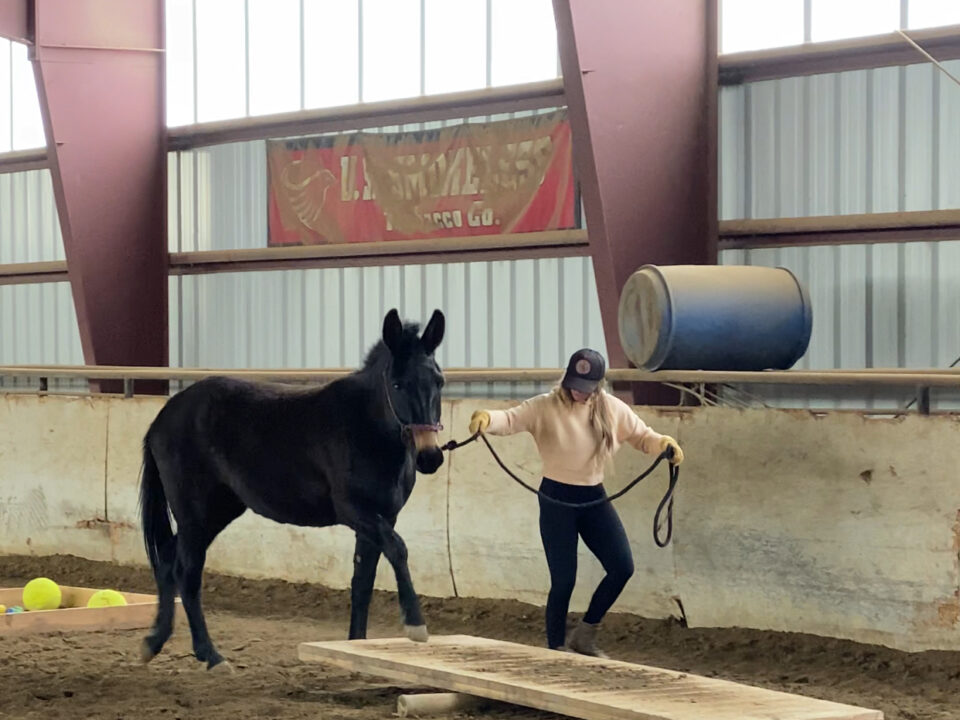As outdoorsmen and women, there is nothing that we love more than the feeling that is achieved while navigating the rugged terrain found atop the highest peaks in the world. We all love the beauty of nature, the imperfection of the world. Wild places that are worn by time are a sight to behold. Yet at home, in the privacy of our own minds, we often lose touch with the beauty found within our own body, especially as we age.
Being dissatisfied with our body composition has much of the world turning to patterns of quick fix, rapid result, yo-yo dieting. Seeking out the latest diet trends because you see someone experiencing rapid results. But when you go off the “diet” and “weight” that you lost comes right back, it can turn into a vicious never-ending cycle.
This cycle is found outside of diets too- for instance, on the mountain, do you lose 5, 10, 15 or 20 pounds during a hunt? Then when you go home you resume old eating and exercise habits and gain the weight back.
If you are close to a healthy body weight and yet, you find yourself unable to eat what you once were able to eat without weight gain or your muscle mass has been slowly decreasing, this could be partially attributed to yo-yo dieting. It could also be as simple as aging and not remaining committed to a healthy eating and weight training program.
If you outwardly look fit and are not “over-weight” but you don’t consistently exercise and you have poor eating habits, you may be suffering from the phenomenon that is called the skinny fat syndrome. Just because someone looks skinny or fit does not relieve them of chronic obesity related disease that plagues individuals that are outwardly overweight.
There are several ways to achieve the body that you want. First is to break the yo-yo dieting cycle and rid yourself of the skinny fat phenomenon. Next in order to look and most importantly feel better, commit to healthy eating habits and a strength and cardiovascular training program.

Weight Training
Muscle is the engine that burns body fat. Adding weight training sessions 3-5 days a week for at least 30 minutes each session will help increase muscle strength, improve body composition, and reduce the risk of osteoporosis.
Below, I have put together some answers to frequently asked questions that will help get you going in the right direction.
Strength Training Q & A
How many sets should I be doing to increase my size and strength?
The total number of sets that you perform to failure for each body part should be around three. In many cases, when training to failure, two sets may be more than adequate and is equally effective for muscle toning and shaping.
What is the best repetition range for increasing size and/or strength?
Depending on your current level of fitness, muscular growth and hypertrophy can occur efficiently within a broad repetition range (6-15). If however, you have been weight training regularly for a long period of time and have learned how to effectively incorporate proper biomechanics, full range contractions, you may find that muscular strength and hypertrophy is accelerated when you train within the 6-8 repetition range.
Should I perform a different exercise each time I weight train?
Scientific data has suggested that altering the weight training exercises that you perform each time you lift, is perhaps the most effective way to promote favorable changes in muscular size and shape.

Muscle Recovery
Muscle recovery truly begins while you sleep, Wilderness Athlete Midnight Build infuses nutrients and adaptogens into the repair process that your body is under during sleep.

Cardiovascular Training Q&A
Don’t forget the importance of cardiovascular health- for a strong healthy heart cardiovascular training sessions should be at LEAST 30 minutes and ideally 45-60 minutes 3-6 days a week.
How often should I do cardiovascular exercise to get results?
Two things to keep in mind here are frequency and duration. Both are critically important. To induce positive changes in body composition, you should engage in cardiovascular exercise at least 4 times per week for no less than 30 minutes each session. Choose an exercise that uses the large muscles of the hips, thighs and buttocks such as walking on an incline treadmill, riding a stationary bike, or using a stair climber.
*Engaging in cardiovascular exercise 5-6 days a week for 60 minutes each session should ultimately be achieved if you want to maximize the rate of fat loss and cardio-respiratory conditioning.

How fast should my heart be beating while I am exercising?
The easiest way to determine your recommended target heart rate is to use the Age Predicted Maximum heart rate formula.
Subtract your age from 220, then multiply that number by a percentage depending on what your current level of fitness is combined with your desired health and fitness goal. A general guideline for training sensitive zones is provided below, however, caution needs to be taken not to exceed your fat burning zone if you are just beginning an exercise program. It is recommended that you seek professional guidance in determining your recommended training sensitive zone.
Fat Burning Zone: 60% to 75% of maximum heart rate
Fitness Zone: 75% to 85% of maximum heart rate
Performance Zone: 85% t0 100% of maximum heart rate
220-Age x 70%= Fat Burning Zone (+- 4 beats)
Is it more effective to do cardiovascular exercises two times per day for thirty minutes or once per day for sixty minutes?
Performing cardiovascular exercise for sixty minutes per session is considerably more effective for fat loss and improving the cardio-respiratory system than two thirty-minute sessions. This is a result of the body switching to a more concentrated source of energy (body fat) after thirty minutes of exercise, therefore causing a higher ratio of fat to be used for fuel.
Training Example & Tips
First of all, use common sense in the weight room. Your warmup should be roughly half of what your training weight will be to achieve failure. After your warmup, do two sets to failure within your desired range of repetitions, then a drop set with your warm-up weight again to failure. For your drop set, don’t focus on how many reps, focus on failure, whatever that number may be. Make sure that you are achieving a full range contraction throughout the entire range of motion.
We can only get stronger when we overload our muscles beyond what they are accustomed to. This can be accomplished in several ways.
- Number of Repetitions in an Exercise
- Number of Sets in an Exercise
- Increased Intensity with Active Resting Periods
- Increased Weight
Full Range Contractions
Make sure that you are lifting and appropriate weight that you can safely achieve a complete range of motion while your muscles are in a fully contracted state throughout the concentric and eccentric range of motion. This will accelerate muscle strength more efficiently while reducing the occurrence of injury.
*Below I have outlined a sample training plan. Modify if needed to your current level of fitness.
Monday- Chest/Arms/60 Minutes Cardio
Tuesday- Legs/60 Minutes Cardio
Wednesday- Back/Shoulders/60 Minutes Cardio
Thursday- Off
Friday- Chest/Arms/60 Minutes Cardio
Saturday- Legs/60 Minutes Cardio
Sunday Off
Monday- Back/Shoulders/60 Minutes Cardio.
With this training recommendation, all your body parts get trained twice in an 8-day period, while doing 2 exercises to failure per body part. Each time you train, change the exercises that you conduct, angles etc. This type of training will cause constant muscle confusion. Use google to help you come up with exercise ideas or hire a personal trainer for help.
Keep in mind that you are tearing down in the gym, so you need days off to rebuild.

Nutrition- The Basics
Individual caloric/nutrient needs vary significantly from person to person. However, here are a few tips that are the foundation of good nutrition:
- Eat your first meal within an hour of waking and a small meal every 3-4 hours until 2 hours before bed.
- You should never wait so long to eat that you feel starving or eat so much that you feel thanksgiving full.
- Do not work out on an empty or pre-breakfast stomach. Eat a small meal to stabilize your blood sugar and ensure that you have the proper nutrients available to your body to power you through your workout.
- Each meal should contain roughly the same nutrient ratios per meal (amount of complete protein, complex carbohydrates and fat).
- Try to eat at least two fresh vegetables and two fruits each day.
- Limit yourself to one shake or meal replacement each day. Whole natural food is always best.

If You Fail To Plan, You Plan To Fail
Your nutrition and exercise program must be a priority in your life that you literally schedule into your day. Invest in a day planner and schedule in your workout dates and times and plan other activities around those workouts. NO EXCUSES.
A journal is a great way to stay accountable and on track with what you are actually eating and frequency of your exercise. Wilderness Athlete’s 28 Day Challenge Guide and Tracker is an affordable booklet that will help you stay accountable and motivated for a 28-day kick start period.
Preparation is key to success. Take one day a week such as Sunday and prepare all of your meals for each day, including snacks. Plan enough meals for the number of days you are working so that all you have to do is grab your food and go.
Glycemic Index
Keep your eating clean. If food comes out of a box or package, chances are it is highly processed and that typically signifies a higher glycemic index. The higher the glycemic index of a food, the faster it breaks down within your body causing a spike in blood glucose levels and rapid fall. Foods with a low glycemic index break down within your body more slowly giving you more stable blood sugar levels. Look for foods like clean lean meat, substitute potatoes for squash, vegetables, fruits and non-gluten grains like brown rice. And of course, remove sugar from your diet.
Nutrition Q&A
| Why do I need to eat protein, carbohydrates, and fat at every meal?
Every single one of your meals, all day long from breakfast, snacks, lunch to dinner should all have roughly the same nutrient ratios of carbohydrates, complete protein and fat and roughly the same number of calories in each meal. Meaning you should not gorge on a giant dinner and eat like a bird all day long. Your body is going to function and feel its best when your blood sugar is stable. A proper balance of carbs/complete protein/fat at each meal will provide the nutrients your body needs for repair/rebuild/recovery at a cellular level and allow for efficient use of stored body fat as a fuel source. |
How long should I wait to eat before and after exercise?
Many people believe that you should exercise on an empty stomach to burn body fat faster. In reality, if you exercise in a state of hypoglycemia (low blood sugar) you may end up losing lean body mass and muscle tone due to the lack of glucose. You may lose weight, because your body is breaking down lean body mass for glucose, therefore you are more likely to become a “smaller” version of yourself, instead of a “leaner” version.
Additionally, many people believe that you should eat and/or drink carbohydrate rich snacks after exercise in order to replenish muscle glycogen. For the most part, unless you are engaging in repeated bouts of prolonged high intensity exercise each day, and/or your current eating habits throughout the day are suboptimal, it is not necessary to consume carbohydrate rich snacks after exercise to improve muscular performance, strength and/or hypertrophy.
Ultimately, the answer to this question depends on the time and duration of your exercise session. Since the primary objective with every health and fitness goal is to achieve and regulate normal blood sugar levels, you should try to eat a properly structured meal every three to four hours throughout the day (from one hour of waking to two hours before going to sleep).
As far as eating before and after exercise is concerned, you should try to eat a meal approximately one hour before and one hour after your exercise session.
For example, if you wake up at 6:00am, you should try to eat your first meal by 7:00am. Then if you exercise for an hour or two, you should prepare to eat again at 10:00am.

Hydrate
A common symptom of dehydration is hunger. Instead of grabbing a snack, drink down some water and see how you feel afterwards. Carry a 2 quart bottle of water everywhere you go and be sure you fill it up at least three times a day. Adding Wilderness Athlete Hydrate & Recover and Energy & Focus will take you a step beyond good hydration with the addition of energy, amino acids, vitamins, minerals and antioxidants. Don’t drink your calories- avoid sugary sports drinks and alcohol.
Rest & Sleep
Muscle gains are made during the recovery phase- Give each muscle group at least 2 days of rest after training before you train that muscle group again. Also, make sure that you are getting 7-8 hours each night of sleep. Adding Wilderness Athlete Nighttime Optimizer will help infuse nutrients adaptogens into the repair process that your body is under during sleep.
The cure for skinny fat will not occur overnight, however, with the commitment to a solid exercise protocol that includes weight lifting and cardiovascular training and a solid whole food based nutrition plan you too can combat the skinny fat phenomenon.






